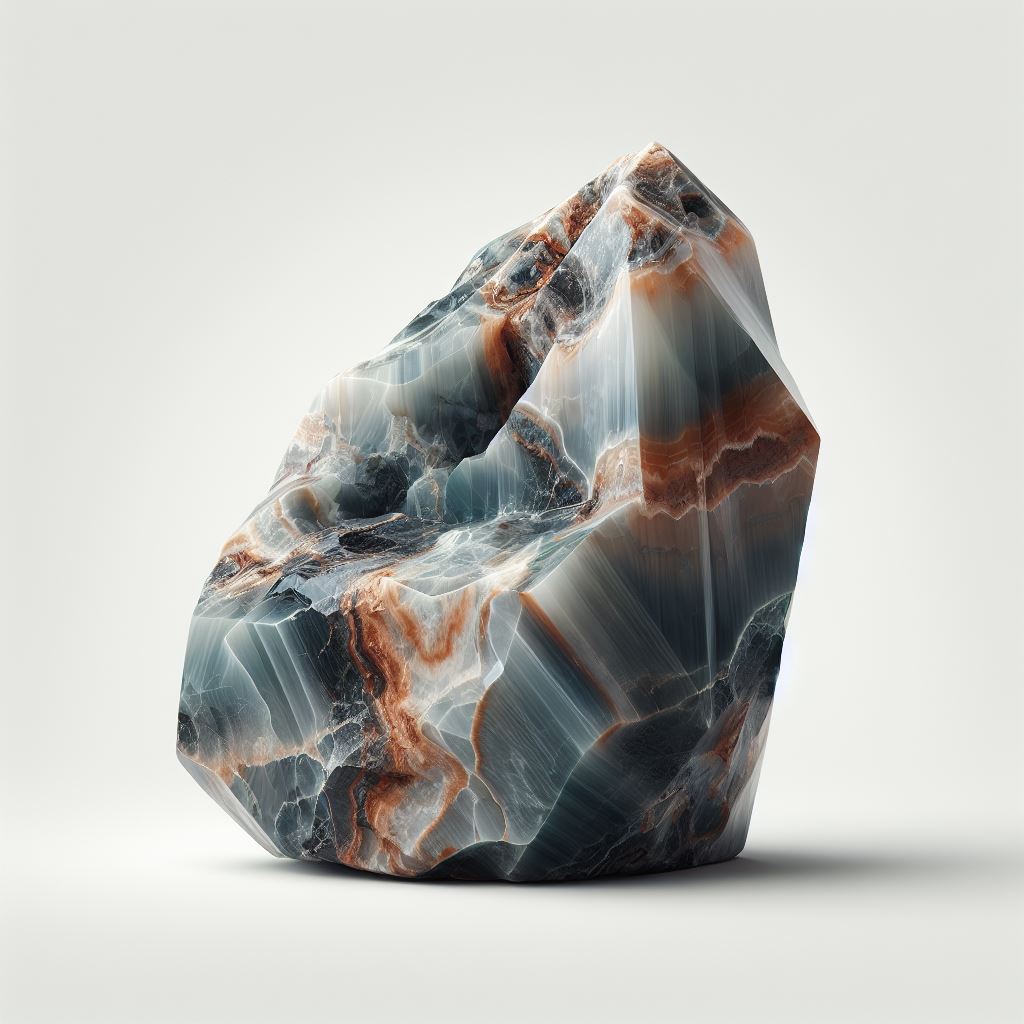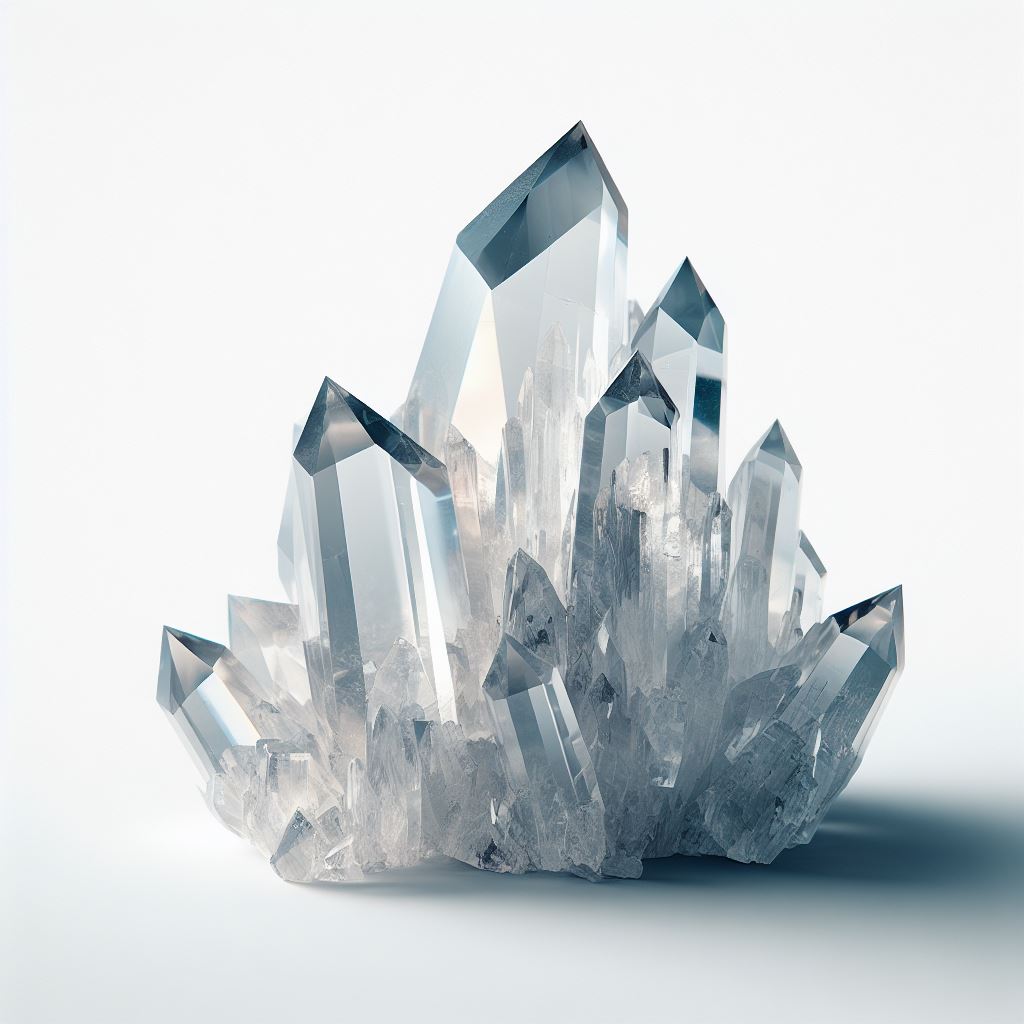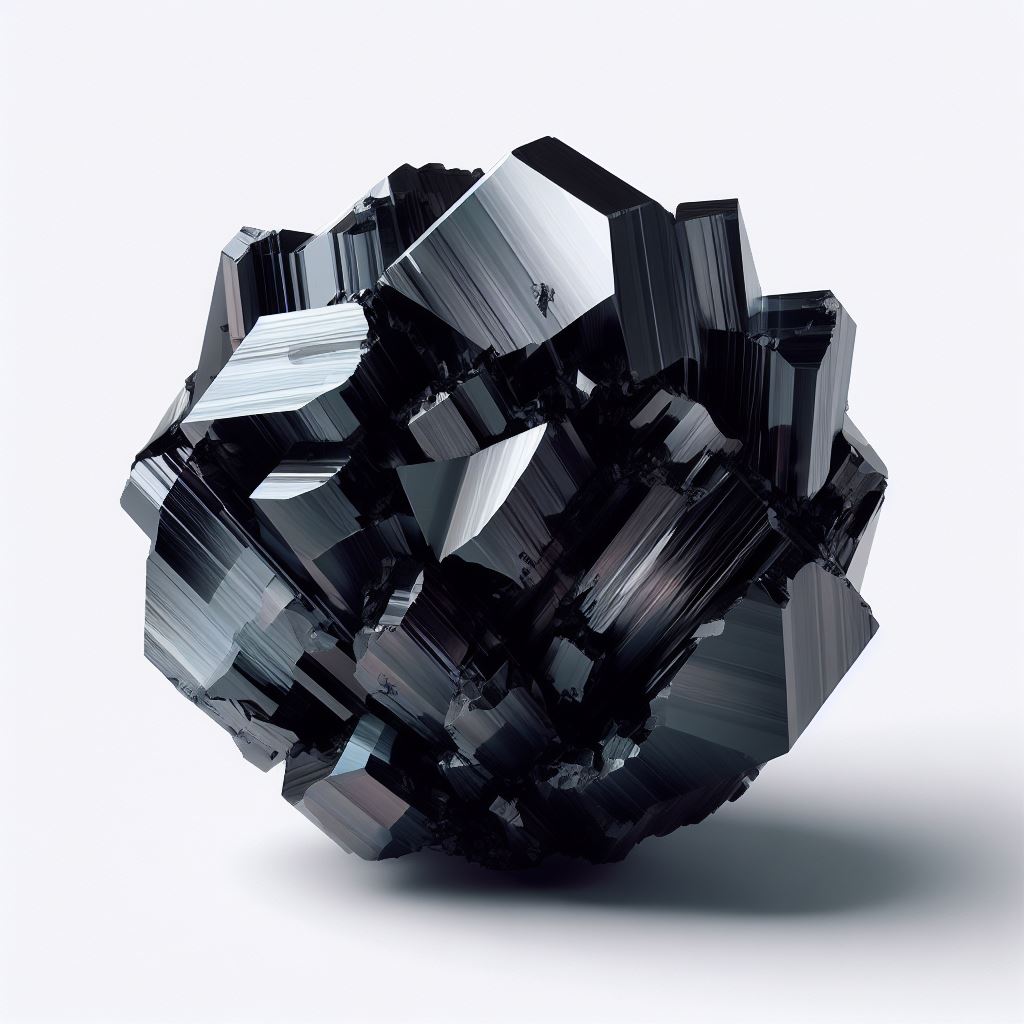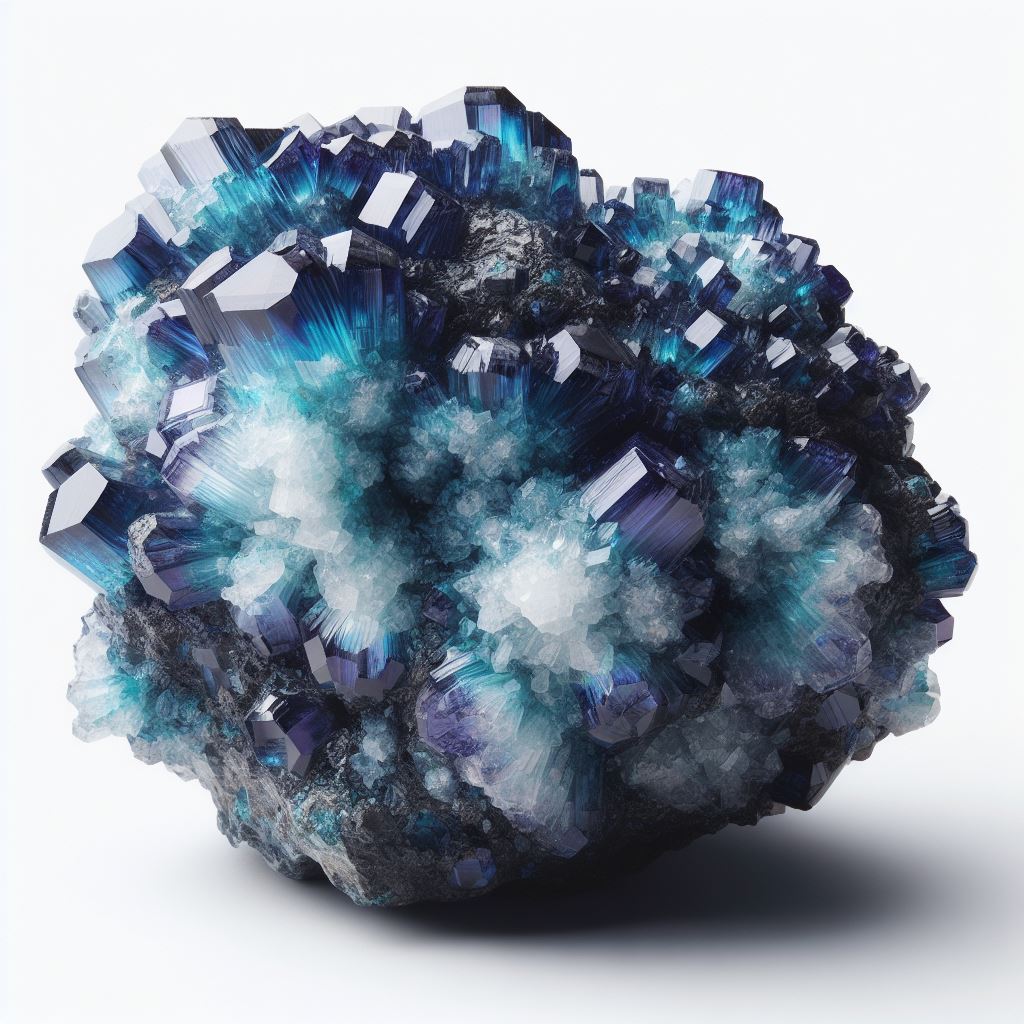Welcome to this comprehensive guide and history of jasper crystals, including picture jaspers, orbicular jaspers, and gemstone beads. Explore the fascinating world of microcrystalline quartz in this informative post. Jasper crystals, including picture jaspers and orbicular jaspers, are highly sought after semiprecious beads due to their vibrant colors and unique patterns. These microcrystalline quartz gemstones are renowned in the world of gemstones. For centuries, semiprecious gemstone beads have been utilized in various forms of jewelry and decorative items, showcasing their timeless beauty. These microcrystalline quartz crystals have been a popular choice for adding a touch of elegance to any piece.
Beyond their aesthetic appeal, jasper crystals, a type of semiprecious gemstone, are believed to possess powerful healing properties that can enhance both physical and emotional well-being. The use of jaspers in the form of gemstone beads or semiprecious beads is popular among those seeking their healing benefits. Formed from silica-rich sedimentary rocks, quartz is a semiprecious gemstone that exhibits a stunning array of colors and patterns due to the presence of mineral impurities. The rhyolite gemstone beads are a perfect example of this beauty. Some notable varieties of semiprecious gemstone include picture jasper, ocean jasper, blood jasper, porcelain jasper, fancy jasper, zebra jasper, and orbicular jaspers. These semiprecious gemstone beads are made from quartz and are commonly used in jewelry making.
In this guide, we will delve into the fascinating history of jasper crystals, a semiprecious gemstone, while exploring their diverse types and captivating characteristics. From translucent quartz to stunning semiprecious beads, jaspers have a rich and captivating history. Join us on this journey as we uncover the enchanting world of gemstones, including semiprecious beads like quartz and blood jasper.
History and Meaning of Jasper Stones
Jasper gemstone has a fascinating history that stretches back thousands of years. Jasper stones, along with quartz and semiprecious beads, have been used for centuries. Ancient civilizations across the globe have left evidence of their use and reverence for gemstones, semiprecious beads, quartz, and blood jasper. The gemstone known as jasper, derived from the Greek word meaning “spotted stone,” is prized for its unique appearance. It is a type of quartz that is often used to create beautiful semiprecious beads.
Throughout history, gemstone jaspers have been associated with various meanings and beliefs. These semiprecious beads, often found in shades of gray, hold a special significance. Gemstones, such as jaspers, were often seen as symbols of protection, courage, and strength. These semiprecious beads were admired for their beautiful gray hues. Different cultures around the world attributed specific qualities to jasper stones and beads based on their colors and patterns.
In ancient Egypt, jasper beads were believed to bring stability and balance to one’s life with their vibrant color. It was also associated with the goddess Isis, who represented motherhood and fertility. Beads and jaspers added color to this association. Egyptians used jaspers, beads, and color in amulets, jewelry, and even carved it into scarabs.
The Native American tribes held jasper beads in high regard for their vibrant color. They saw jaspers as powerful healing stones that could connect them to the Earth’s energies through the use of beads, adding color to their lives. Red jasper beads were particularly valued for their ability to stimulate vitality and provide protection against negativity. The vibrant color of the jaspers adds to their appeal.
In medieval times, people believed that wearing jasper beads would protect them from evil spirits and bring them good luck in battle. The color of the jasper beads was thought to have these magical properties. Its association with strength and the use of color made beads a popular choice among warriors.
Jasper stones, also known as beads, come in a wide range of colors and patterns, each carrying its own significance. For example:
- Red Jasper: Known as the “stone of endurance,” red jasper beads are believed to enhance stamina, physical strength, vitality, and color.
- Yellow Jasper beads are associated with positivity, confidence, and mental clarity. The color of these beads is yellow.
- Green Jasper beads: Often linked to nature and growth, green jasper beads are thought to promote harmony, balance emotions, and attract abundance.
- Picture Jasper beads: With its unique scenic patterns resembling landscapes or pictures, picture jasper beads are said to enhance creativity and visualization abilities.
- Ocean Jasper, a type of stone found exclusively in Madagascar, is known for its vibrant colors and circular patterns. It is a popular choice among bead enthusiasts due to its unique characteristics. Beads are believed to bring joy, optimism, and a sense of tranquility.
Jasper stones, known for their unique patterns and vibrant colors, have been used in the creation of beads, various forms of jewelry, amulets, and decorative items throughout history. Their beauty and symbolism continue to captivate people today. Whether you’re drawn to the vibrant colors of jasper stones or intrigued by their historical significance, these beads offer a connection to our ancient past and a reminder of the enduring power of nature.
Characteristics and Properties of Jasper Gemstones
Jasper gemstones, also known as beads, are renowned for their vibrant colors, including red, yellow, green, and brown. These gemstones, also known as beads, showcase unique patterns like stripes, swirls, spots, or veining, making each bead truly one-of-a-kind. With its distinct appearance and remarkable properties, jasper has become a popular choice in jewelry components, especially for beads.
One of the key characteristics of jasper beads is their composition as a form of chalcedony quartz. This mineral gives jasper beads a hardness rating between 6.5 and 7 on the Mohs scale, making them durable stones that can withstand everyday wear. Its toughness makes it an excellent stone for creating jewelry pieces such as necklaces, bracelets, pendants, and beads.
In addition to its physical attributes, jasper beads also possess metaphysical properties that have been revered for centuries. Beads are believed to have protective properties that shield the wearer from negative energies and promote grounding and stability. Many people use jasper beads as a talisman for courage and strength during challenging times.
The opaque or semi-translucent appearance of jasper beads adds to their allure. The varying degrees of transparency allow light to interact with the unique patterns within the stone, creating captivating visual effects with beads. Whether you choose bold red jasper beads with swirling patterns or earthy green beads with veining reminiscent of landscapes, each bead tells a story through its natural beauty.
Jasper gemstones, known for their beautiful beads, have been used by various cultures worldwide throughout history. The Ancient Egyptians believed that wearing jasper beads would bring them protection against evil spirits and promote harmony in their lives. Native American tribes also held beads in high regard for their healing properties and connection to nature.
There are several factors to consider:
- Color: Choose from an array of stunning bead colors such as red jasper symbolizing passion or yellow jasper representing joy and positivity.
- Pattern: Decide on the pattern of beads that resonates with you, whether it’s the bold stripes of zebra jasper or the delicate spots of dalmatian jasper.
- Cut: Consider the shape and size of the gemstone beads that will best suit your intended design or purpose.
- Setting: Determine whether you prefer a pendant, ring, bracelet, or other jewelry components to showcase your jasper gemstone beads.
Types of Jasper Stones: Imperial, Brecciated, Leopard Skin, Heliotrope, Dragon Blood, Green
Imperial jasper, also known as beads, is a type of jasper stone that is renowned for its vibrant and eye-catching colors. This variety of jasper can display a range of hues, including reds, greens, blues, and beads. The striking coloration of beads makes them a popular choice for jewelry and decorative purposes.
Brecciated jasper is another fascinating type of jasper stone. The stone exhibits fragmented patterns created by mineral-filled cracks, resembling beads. These unique patterns give brecciated jasper, a type of stone often used in the creation of beads, a distinctive appearance that sets it apart from other varieties.
Leopard skin jasper is a popular stone for making beads because of its distinctive spots that resemble those found on leopards’ fur. These spots, also known as beads, can come in various earth tones such as red, brown, and gray. The combination of colors and patterns gives leopard skin jasper a wild and exotic look, making it perfect for creating unique jewelry with beautiful beads.
Heliotrope or bloodstone is a dark green variety of jasper speckled with red or yellow markings resembling drops of blood. These unique beads are highly sought after for their distinctive appearance. This unique appearance has led to various legends and beliefs associated with the stone’s supposed healing properties. Heliotrope has been used throughout history for its perceived ability to stop bleeding and promote good health.
Dragon Blood Green jasper is another captivating variation of this gemstone. It exhibits deep green coloration with red streaks or patterns running through it. This combination creates an intriguing contrast that adds to the stone’s allure.
Green rhyolite is often referred to as green jasper due to its similar appearance and properties. It features shades of green ranging from light to dark, making it an attractive option for jewelry enthusiasts.
Each type of jasper stone possesses its own unique characteristics and visual appeal. From the vibrant colors of imperial jasper to the fragmented patterns in brecciated jasper, these stones offer endless possibilities for creating stunning jewelry pieces or adding a touch of natural beauty to your surroundings.
Varieties of Jasper Gemstones: Spider Web, Orbicular, Scenic or Picture, Poppy or Flower
Spider web jasper is a type of jasper that displays intricate web-like patterns in various colors. These unique patterns resemble spider webs and give the stone its name. The colors can range from earthy browns and reds to vibrant blues and greens. Spider web jasper is often used in jewelry making, particularly in the creation of gemstone beads.
Orbicular jasper is another fascinating variety of jasper. It is characterized by circular or orb-like formations within the stone. These formations are created by concentric layers of minerals that have accumulated over time. The colors found in orbicular jasper can vary widely, including shades of brown, green, red, and even blue. This particular variety of jasper is highly sought after for its distinctive appearance.
Scenic or picture jasper is yet another captivating form of this semiprecious gemstone. As the name suggests, scenic or picture jasper features landscape-like scenes formed by mineral deposits within the stone. These scenes often resemble desert landscapes with their rich earthy tones and intricate details. Some pieces of scenic jasper even depict images that resemble mountains, trees, or rivers.
Poppy or flower jasper showcases floral patterns resembling blooming flowers. This variety of jasper exhibits vibrant colors such as pinks, purples, yellows, and oranges reminiscent of a beautiful garden in full bloom. The unique patterns found in poppy jasper make it a popular choice for jewelry designers who want to create eye-catching pieces.
Each variety of jasper has its own distinct characteristics and appeal when it comes to creating stunning jewelry pieces:
- Spider web jasper offers a mesmerizing blend of colors and intricate designs that add depth to any piece.
- Orbicular jasper’s circular formations create an intriguing visual effect that captures attention.
- Scenic or picture jasper allows wearers to carry a piece of nature with them, showcasing the beauty of landscapes within a gemstone.
- Poppy or flower jasper brings a burst of vibrant colors and floral patterns that evoke feelings of joy and positivity.
Whether you’re looking for unique beads to incorporate into your jewelry designs or simply want to add some variety to your gemstone collection, exploring the different varieties of jasper can be an exciting journey. Each variety offers its own charm and showcases the natural beauty of this semiprecious gemstone. So go ahead, embrace the world of jasper and let its vibrant colors and unique patterns inspire your creativity!
Formation and Origins of Jasper Crystals
Jasper crystals have a fascinating history that dates back millions of years. These stunning gemstones are formed through a process involving the deposition of silica-rich sediments over time. The specific geological conditions during formation contribute to the unique colors and patterns seen in different types of jasper stones.
Deposition of Silica-Rich Sediments
Jasper crystals belong to the mineral family known as chalcedony, which also includes agate and onyx. The process begins with the deposition of silica-rich sediments, such as mud or volcanic ash, in bodies of water like lakes or oceans. Over time, these sediments accumulate and undergo compaction.
Geological Conditions for Formation
The pressure from the overlying layers compacts the sediments, causing them to harden into rock. This process is known as lithification. As the rock forms, dissolved minerals seep into the spaces between particles and crystallize over time. The presence of iron oxides gives jasper its distinctive reddish-brown color.
Worldwide Locations
Jasper crystals can be found in various locations worldwide. Some notable sources include Australia, Brazil, India, Madagascar, and the United States. Each region offers unique varieties of jasper with different colors and patterns due to variations in geological conditions during their formation.
Influence of Other Minerals and Elements
In addition to silica and iron oxides, other minerals and elements present during formation can influence the appearance of jasper crystals. For example:
- Manganese imparts shades of purple or lavender.
- Hematite contributes to red tones.
- Chlorite creates green hues.
- Fossilized remains can create interesting patterns within jasper stones.
Etymology: Ancient Origins
The name “jasper” has ancient origins and is believed to come from various languages such as Greek, Latin, Hebrew, Assyrian, Persian, or Arabic. The exact etymology is uncertain, but it has been associated with words meaning “spotted stone” or “speckled gem.”
Use by Ancient Civilizations
Jasper crystals have a rich history of use by ancient civilizations. They were highly valued for their beauty and believed to possess protective and healing properties. Ancient Egyptians, Greeks, and Native American tribes incorporated jasper into jewelry, amulets, and ceremonial objects.
Geological Deposits
Jasper crystals are commonly found in sedimentary deposits. These deposits are formed when layers of sediment accumulate over time and undergo processes like compaction and cementation. The unique combination of geological factors determines the specific appearance of jasper stones found in different regions.
Healing Properties of Jasper: Emotional and Mental Well-being
Jasper crystals have long been revered for their healing properties, particularly in promoting emotional and mental well-being. This gemstone is believed to possess calming energies that can help bring stability and balance to one’s emotions.
Calming Properties for Stress Relief
One of the key benefits associated with jasper crystals is their ability to alleviate stress, anxiety, and depression. The soothing vibrations emitted by these crystals are thought to promote a sense of tranquility and inner peace. When life gets overwhelming, turning to jasper can provide a much-needed respite from the chaos.
Enhanced Mental Clarity and Focus
In addition to its calming effects, jasper is also known for enhancing mental clarity, focus, and concentration. By working with this crystal, individuals may experience an improved ability to think clearly and make decisions with greater ease. Whether it’s studying for exams or tackling complex tasks at work, jasper can be a helpful ally in sharpening the mind.
Grounding Energy for Strength and Courage
Jasper crystals are often used for grounding energy, which means they help connect individuals with the Earth’s energy and promote feelings of strength and courage. When faced with challenges or difficult situations, holding or wearing jasper can provide a sense of stability and support. It acts as an anchor that keeps us grounded amidst the storms of life.
Chakra Alignment: Solar Plexus & Root Chakras
Jasper is commonly associated with two primary chakras: the solar plexus chakra (located in the upper abdomen) and the root chakra (located at the base of the spine). These energy centers play crucial roles in our overall well-being. Jasper helps balance these chakras by clearing any blockages or imbalances within them.
History & Meaning
The history of jasper dates back centuries, with ancient civilizations recognizing its beauty and powerful energy. The name “jasper” is derived from the Greek word “iaspis,” which means “spotted stone.” This gemstone has been used for various purposes throughout history, including as a protective talisman and a symbol of courage.
Harnessing the Healing Power of Jasper
To harness the healing power of jasper crystals, there are several approaches you can take:
- Carrying or wearing jasper jewelry: By keeping jasper close to your body, you can benefit from its calming and grounding energies throughout the day.
- Meditating with jasper: Find a quiet space, hold a piece of jasper in your hand, and allow its energy to envelop you as you meditate.
- Placing jasper in your environment: Whether it’s at home or in the office, having jasper crystals strategically placed can help create an atmosphere of tranquility and balance.
Remember that each person’s experience with crystal healing may vary. It’s important to listen to your intuition and work with jasper in a way that feels right for you.
A Comprehensive Guide to Jasper Crystals
In this comprehensive guide, we have explored the fascinating world of jasper crystals. We delved into the history and meaning of these stones, discovering their significance throughout different cultures and civilizations. We also examined the various characteristics and properties that make jasper gemstones unique and sought after by collectors and crystal enthusiasts.
Moving on, we explored the different types of jasper stones, including Imperial, Brecciated, Leopard Skin, Heliotrope, Dragon Blood, and Green jasper. We discussed the varieties of jasper gemstones such as Spider Web, Orbicular, Scenic or Picture, and Poppy or Flower jasper.
Furthermore, we delved into the formation and origins of jasper crystals to provide a deeper understanding of how these beautiful stones come into existence. Lastly, we explored the healing properties of jasper and how it can promote emotional and mental well-being.
If you’re intrigued by the world of jasper crystals or looking to expand your collection with these captivating gemstones, we encourage you to explore further. Dive deeper into each type of jasper stone’s unique features and properties to find the perfect addition to your crystal collection.
FAQs about Jasper Crystals
What is the best way to clean my jasper crystals?
To clean your jasper crystals effectively without causing any damage or discoloration, it is recommended to use mild soapy water along with a soft cloth or brush. Avoid using harsh chemicals or abrasive materials that may scratch or harm your precious stones.
Can I wear a piece of jasper jewelry every day?
Yes! Jasper is known for its durability and hardness which makes it suitable for everyday wear. However, it’s essential to take proper care of your jewelry by avoiding exposure to harsh chemicals or extreme temperatures that may affect its appearance over time.
How can I identify genuine jasper from imitations?
Authentic jasper crystals often display unique patterns, colors, and textures. If you’re unsure about the authenticity of a jasper stone, it’s advisable to consult with an experienced gemologist or purchase from reputable sources that provide certification of authenticity.
Are there any specific precautions I need to take while using jasper for healing purposes?
While jasper is generally considered safe for use in healing practices, it’s crucial to remember that crystal healing should complement conventional medical treatments rather than replace them. It’s always recommended to consult with a healthcare professional before using jasper or any other crystal for therapeutic purposes.
Can I combine different types of jasper stones in my crystal grid?
Absolutely! Combining different types of jasper stones in your crystal grid can create a harmonious and powerful energy field. Experiment with various combinations and trust your intuition when selecting the stones that resonate with your intentions and goals.
These FAQs aim to address some common queries related to jasper crystals and their usage. By providing accurate answers, we hope to assist you in making informed decisions regarding the purchase and care of these captivating gemstones.



